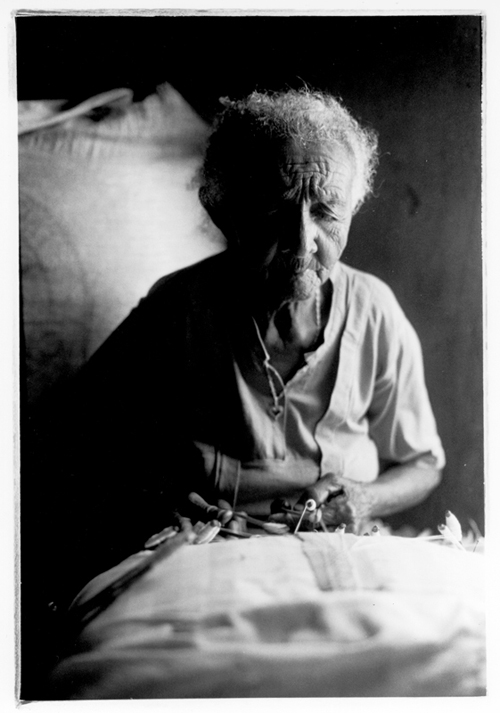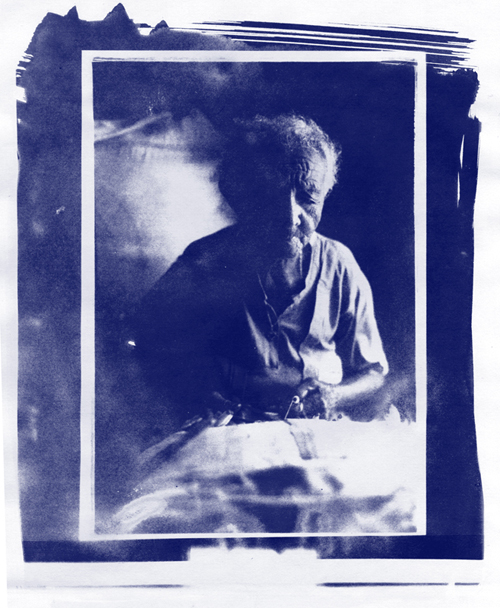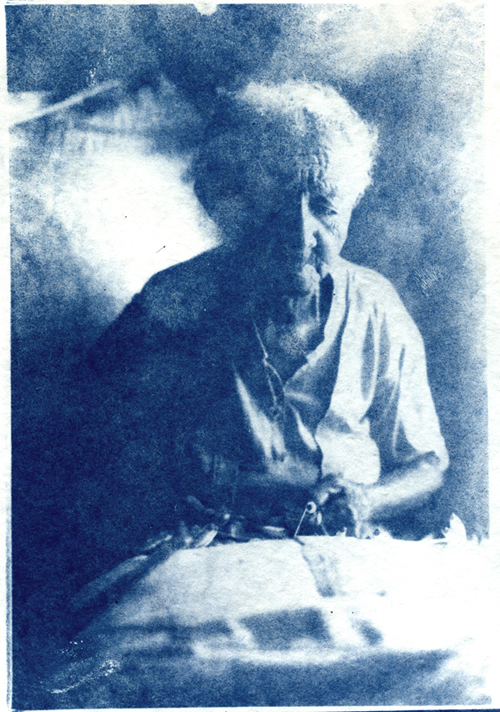Cyanotype Prints
Background
Herschel’s invention of cyanotype, or printing in Prussian blue, was at first taken up only by amateur botanists for plant illustration. Most notable among these was Anna Atkins who, from 1843 to 1853, hand-printed in cyanotype her comprehensive albums of botanical photograms of algae and ferns, which have become highly-treasured items in the early photographic canon.
Following Herschel’s death in 1871, cyanotype was usurped by entrepreneurs to exploit its potential as a reprographic medium. Their re-styled “ferroprussiate” process found some use among photographers as a cheap and easy option for proofing negatives, but its major commercial market was for copying the plans in every drawing office, and it became the leading process for photocopying until the mid-1950s. Even in obsolescence it has endowed our language with an indelible ne word: the blueprint.
The British Photographic Establishment has been reluctant to acknowledge cyanotype as valid pictorial medium, thanks to the intolerant response of 19th century British critics to its powerful and uncompromising color. Fortunately this prejudice did not prevail universally. In the USA, Canada, and France, there are substantial museum holdings of artistic cyanotypes. Herschel’s original cyanotype formula survived essentially unchanged for 160 years, due to its pleasing simplicity and economy.
Samples
Mulher Rendeira, by Nil Santana (original)
Mulher Rendeira, by Nil Santana (cyanotype test)
Mulher Rendeira, by Nil Santana (cyanotype final)




Add a Comment
You must be logged in to post a comment.